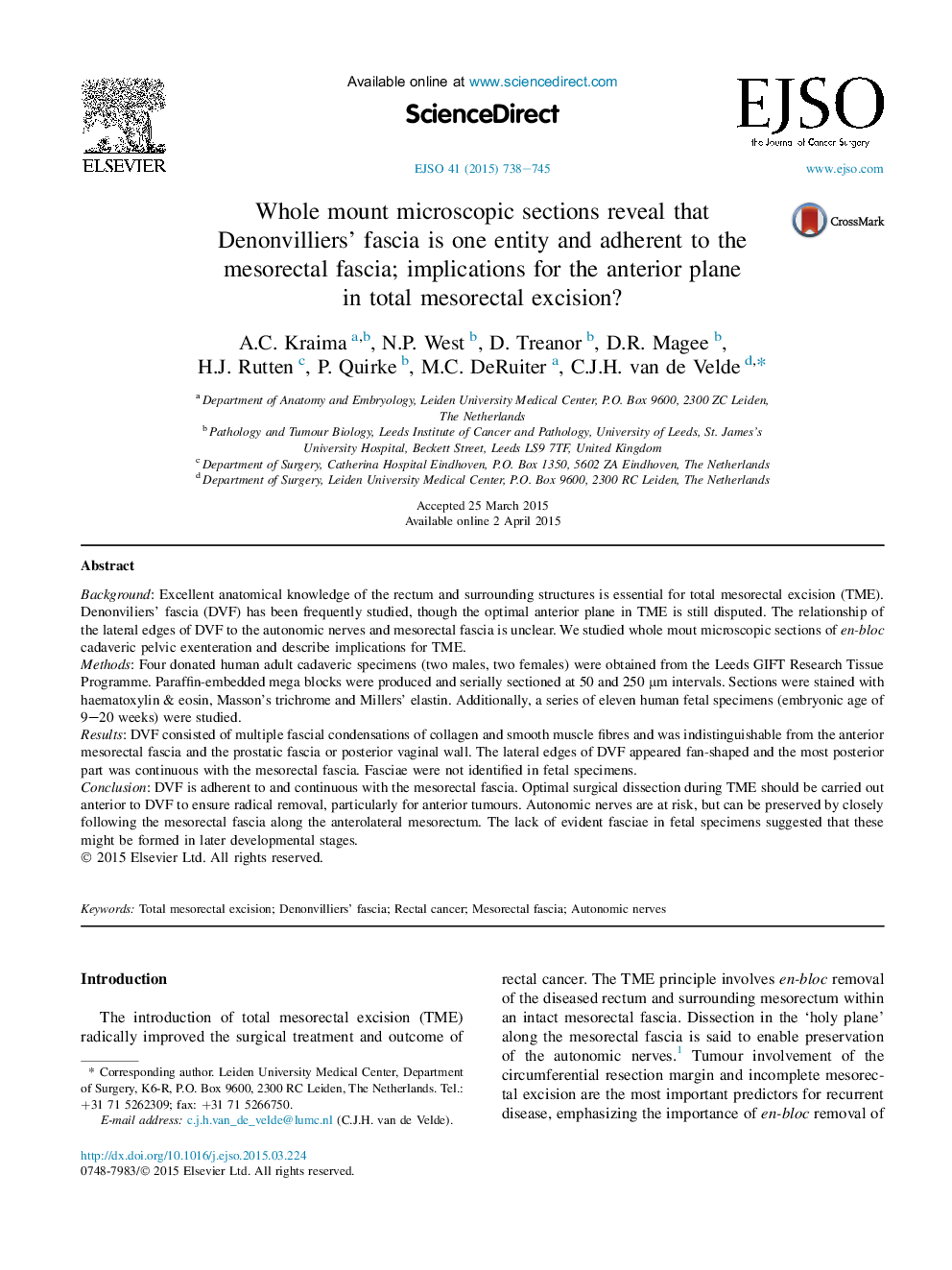| Article ID | Journal | Published Year | Pages | File Type |
|---|---|---|---|---|
| 3984802 | European Journal of Surgical Oncology (EJSO) | 2015 | 8 Pages |
BackgroundExcellent anatomical knowledge of the rectum and surrounding structures is essential for total mesorectal excision (TME). Denonviliers' fascia (DVF) has been frequently studied, though the optimal anterior plane in TME is still disputed. The relationship of the lateral edges of DVF to the autonomic nerves and mesorectal fascia is unclear. We studied whole mout microscopic sections of en-bloc cadaveric pelvic exenteration and describe implications for TME.MethodsFour donated human adult cadaveric specimens (two males, two females) were obtained from the Leeds GIFT Research Tissue Programme. Paraffin-embedded mega blocks were produced and serially sectioned at 50 and 250 μm intervals. Sections were stained with haematoxylin & eosin, Masson's trichrome and Millers' elastin. Additionally, a series of eleven human fetal specimens (embryonic age of 9–20 weeks) were studied.ResultsDVF consisted of multiple fascial condensations of collagen and smooth muscle fibres and was indistinguishable from the anterior mesorectal fascia and the prostatic fascia or posterior vaginal wall. The lateral edges of DVF appeared fan-shaped and the most posterior part was continuous with the mesorectal fascia. Fasciae were not identified in fetal specimens.ConclusionDVF is adherent to and continuous with the mesorectal fascia. Optimal surgical dissection during TME should be carried out anterior to DVF to ensure radical removal, particularly for anterior tumours. Autonomic nerves are at risk, but can be preserved by closely following the mesorectal fascia along the anterolateral mesorectum. The lack of evident fasciae in fetal specimens suggested that these might be formed in later developmental stages.
